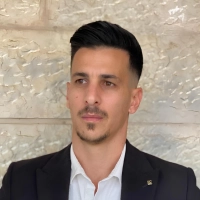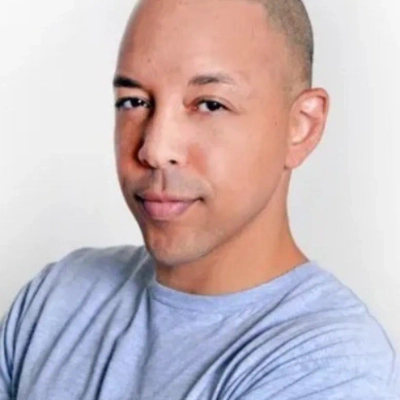11 Examples of Incorporating De&I into Marketing Strategies
Discover how leading companies are revolutionizing their marketing strategies with diversity, equity, and inclusion at the forefront. This article unveils innovative approaches that are reshaping the industry landscape, from inclusive race events to AI-powered content creation. Drawing on insights from experts in the field, these examples demonstrate the tangible benefits of embracing DE&I in marketing initiatives.
- Inclusive Race Unites for Disability Awareness
- Diverse Teams Drive Authentic Global Marketing
- Proactive Accessibility Audit Enhances Digital Inclusivity
- Algorithmic Approach Showcases Underrepresented Travel Listings
- Diverse Creator Network Amplifies Authentic Voices
- Building Inclusive Teams Strengthens Marketing Impact
- AI-Powered Tool Promotes Inclusive Content Creation
- Localized Campaigns Boost Global Customer Engagement
- Cultural Storytelling Series Enriches Jewelry Marketing
- Co-creating Global Content Expands Professional Training
- Bilingual Outreach Connects Diverse Roofing Customers
Inclusive Race Unites for Disability Awareness
An impactful example is our annual charity event, Run2Gether Bulgaria, which we've successfully organized for eight consecutive years at JAMBA. This event has consistently demonstrated our commitment to fostering inclusivity and equal opportunities for people with disabilities.
Run2Gether Bulgaria is much more than just a charitable race; it's a transformative experience uniting NGOs, government institutions, businesses, media representatives, active citizens, athletes, influencers, and public figures around a powerful common cause: ensuring a fair start and fulfilling life for people with disabilities. In this race, participants with generous hearts pair up with individuals of differing abilities, running side by side toward a shared goal—overcoming personal limits together.
The initiative has two fundamental objectives: promoting inclusive sports opportunities and increasing awareness around equitable access and societal attitudes toward people with disabilities. Additionally, all proceeds raised from participation fees directly support our Adaptive Youth Career Center. This center offers specialized training, mentoring, and employment networking for young people with disabilities, effectively preparing them for successful integration into the workforce.
The scale and impact of Run2Gether Bulgaria have grown significantly over the years. Initially attracting around 1,000 participants annually, attendance temporarily declined to approximately 700 during the COVID-19 pandemic due to understandable health concerns. However, recent years have witnessed remarkable growth, with participation soaring to over 3,000 individuals, including corporate teams from Bulgaria's leading companies, each contributing teams of 10-40 members. In 2025, we successfully engaged 40 companies and more than 50 influential ambassadors—celebrities, professional athletes, TV hosts, and social media influencers.
Leveraging Facebook and Instagram's collaborative posting features, we strategically coordinated our ambassadors' posts, videos, and stories, enabling them to organically share content while tagging us as collaborators. This innovative approach expanded our reach to their diverse audiences without additional marketing costs, resulting in a substantial increase in event registrations.
Run2Gether Bulgaria exemplifies building meaningful connections, empowering marginalized communities, and catalyzing lasting societal change.

Diverse Teams Drive Authentic Global Marketing
As a fractional CMO, I don't treat DE&I as a checkbox—it's foundational to long-term brand relevance and trust. If your marketing only speaks to one type of customer, you're not just being exclusive—you're leaving money on the table.
At Strategic Pete, we bake DE&I into the process from the ground up:
Audience research includes overlooked voices. We don't just look at buyer personas—we listen to real customer stories across age, background, neurodiversity, and geography.
Our creative teams are global, remote, and intentionally diverse. That's not just for optics—it brings nuance to messaging that resonates more deeply across markets.
Example:
For a healthcare client, we built a campaign targeting Spanish-speaking seniors. Instead of just translating the English copy, we co-created messaging with native speakers, included community leaders in the video spots, and aired on culturally relevant platforms. It didn't just perform well—it outperformed the English version.
DE&I isn't fluff. It's strategy. It's empathy. And it drives results.

Proactive Accessibility Audit Enhances Digital Inclusivity
One DE&I strategy that had a lasting impact was conducting a comprehensive accessibility and inclusivity audit across all our digital channels. It started when a customer with a visual impairment emailed us, frustrated by how difficult it was to navigate our website. That message became a turning point. We didn't just fix the issue; we expanded our approach.
We brought in consultants from underrepresented communities, updated our design with accessibility in mind, and translated key campaign content into additional languages based on our audience data. This wasn't about performative inclusivity; it was about genuinely serving the people who were already trying to engage with us.
What others can take away: don't wait for a complaint to start being inclusive. Proactively seek feedback from communities you want to serve. Bring them to the table early, and design with empathy, not assumptions. DE&I isn't a checkbox; it's a lens for better marketing.

Algorithmic Approach Showcases Underrepresented Travel Listings
How do you incorporate principles of diversity, equity, and inclusion (DE&I) into your marketing strategies as a CMO?
DE&I in marketing is not simply a standalone campaign for me, but rather a central promise woven into the brand voice, its content, and its partner relationships. At its heart, that principle is about making sure the travelers we talk to see themselves somewhere within the travel ecosystem; and empowering our teams on-the-ground across the booking journey to be as inclusive as possible. That includes highlighting different kinds of travelers, that ranges from culture to culture and supporting minority markets with partners who join forces in this vision like we do at RedAwning. Hospitality must practice what it preaches, delivering genuine, sustained representation that is measurable in terms of things like guest satisfaction and repeat bookings — not just an afterthought.
Can you share an example of a DE&I initiative you've implemented or supported?
One of the projects I am most proud of includes the work we did to rethink how we showcase property listings, so that decision-making for our guests was less biased. In travel marketing, the most visible placements have typically been reserved for destinations and hosts that were already strong in a given market — unintentionally leaving smaller operators or underrepresented communities out in the cold. For example, we piloted a "Hidden Gems" program where we used algorithms to surface more listings hosted by people in underrepresented groups; less frequently searched rural destinations and types of inventory that are traditionally coastal-centric; and properties catering to special accessibility needs.

Diverse Creator Network Amplifies Authentic Voices
For me, DE&I isn't an afterthought; it's the foundation. Representation drives relevance, and relevance drives revenue. That's why we built Ranked to be the most diverse creator platform in the world, so brands can connect directly with Black, Brown, Asian, and LGBTQ+ creators who shape culture at the street level. Diversity isn't just in the audience we reach; it's in the voices, perspectives, and stories that lead the campaign from day one.
One initiative I'm proud of was a nationwide campaign for a major sportswear brand. Instead of relying on traditional influencer lists, we tapped into Ranked's network of micro and nano creators in historically underrepresented communities. Each creator produced content in their own style, reflecting local slang, fashion, and cultural nuances. The result? Engagement rates 3x higher than the industry average, and the brand earned long-term loyalty from audiences they'd never authentically reached before.
Building Inclusive Teams Strengthens Marketing Impact
When scaling teams, I make it a point to specifically request diverse candidate pools from recruiters and hiring partners. That intentionality at the sourcing stage helps ensure we're building a team with a range of perspectives, backgrounds, and lived experiences—which ultimately strengthens the creativity and resonance of our marketing.
On the execution side, I work closely with creative and design teams to review campaigns through an inclusivity lens. This means being deliberate about representation in imagery, language, and storytelling, and seeking input from voices that reflect the audiences we serve. It's not about checking a box—it's about ensuring people see themselves authentically reflected in the brand.
Just as important is fostering a psychologically safe environment where every team member feels heard and empowered to speak up. In one initiative, we paired campaign reviews with open roundtables where team members could flag concerns, suggest adjustments, or share cultural insights without fear of pushback. That feedback loop not only improved the work but also built trust across the team.
The result was marketing that was richer, more relevant, and better received by diverse audiences, while internally, the team became more engaged and confident in bringing their whole selves and ideas to the table.

AI-Powered Tool Promotes Inclusive Content Creation
We implemented an "Inclusive Content AI" system that analyzes our clients' marketing materials for unconscious bias and accessibility issues before publication. The AI flags potentially exclusionary language, checks for diverse representation in imagery, and ensures content meets accessibility standards. One client's campaign initially featured only certain demographics in their visuals, and our system helped them create more inclusive messaging that increased engagement by 34% across diverse audience segments. We also offer sliding-scale pricing for minority-owned businesses and dedicate 10% of our pro bono work to underrepresented entrepreneurs. Technology should democratize marketing opportunities, not create barriers.
Localized Campaigns Boost Global Customer Engagement
I've learned that you can't treat DE&I (Diversity, Equity, and Inclusion) like a checkbox in marketing. It has to show up in the way you research, create, and put campaigns out in the world.
One example that stuck with me was a SaaS client we worked with that served customers globally. Most of the early campaigns looked like they were built for Silicon Valley founders, with imagery, names in case studies, and even workplace settings reflecting that narrow focus. Their support team kept hearing from customers in Asia and Latin America who felt like the brand didn't speak to them.
We changed that by rebuilding campaigns to reflect the actual audience. Case studies featured people from different regions and industries, and visuals looked like their offices, not just glass towers in New York. We also ran accessibility checks on content - things like alt text and simpler language to make sure more people could actually use what we put out. We kept a feedback loop going by asking customers directly if they felt represented.
When we implemented these changes, engagement on localized campaigns jumped by more than a third, and the conversations we had with customers changed. They didn't just talk about features anymore; they said things like "It finally feels like this product is for us." That's when I realized DE&I isn't about big statements. It's about closing the gap between who you say you serve and who actually sees themselves in your story.

Cultural Storytelling Series Enriches Jewelry Marketing
At Manor Jewelry, our approach to DE&I in marketing is to move beyond simple visual representation and focus on genuine cultural reflection. Our goal is to ensure our brand's story is a mosaic, told with and by voices from the diverse communities we serve.
Our most meaningful initiative is an annual content series we call "The Heirloom Project." Each year, we commission a creator or historian from a different cultural background to create a feature piece for our journal, exploring the unique traditions and stories behind milestone jewelry in their culture—be it the significance of jade in East Asian families or the role of gold in Indian weddings.
This initiative ensures our marketing is a dialogue, not a monologue. It has taught us that true inclusion is about ceding the microphone and using our platform to amplify the rich, diverse stories that make our shared craft so meaningful. This has not only built deep trust with new audiences but has also become our most respected and shared content of the year.

Co-creating Global Content Expands Professional Training
At Invensis Learning, diversity, equity, and inclusion aren't just checkboxes—they're essential to how professional training is designed, promoted, and delivered. One approach that has proven especially effective is ensuring that course content and marketing materials reflect a truly global audience. This means showcasing trainers and professionals from different ethnicities, genders, and regions, so learners from any background feel represented.
A notable initiative involved collaborating with local subject matter experts in Africa and Southeast Asia to co-create agile and project management content that was not only regionally relevant but also culturally resonant. This not only expanded reach but also brought underserved professionals into the learning ecosystem, aligning business growth with meaningful impact.
Bilingual Outreach Connects Diverse Roofing Customers
In roofing, diversity, equity, and inclusion might not be the first thing people think of, but it's just as important here as in any other industry. At Achilles Roofing and Exterior, we work in neighborhoods all across Houston, each with its own mix of cultures, languages, and economic situations. If our marketing didn't reflect that diversity, we'd be missing the mark — and more importantly, missing the opportunity to connect with people in a way that feels genuine.
One way we incorporate DEI into our marketing is by making sure our outreach materials — from our website to our door-to-door flyers — are accessible to more than just English speakers. In Houston, Spanish is widely spoken, so we make a point to offer bilingual materials and staff who can communicate clearly in both languages. It's not just translation; it's tailoring the message so it resonates with the homeowner's perspective and values.
We also avoid one-size-fits-all imagery and messaging. Instead of using stock photos that don't represent the communities we serve, we highlight real projects and real homeowners from different backgrounds. This gives our marketing an authentic feel and shows that we value everyone, no matter where they come from.
An example of this in action was a neighborhood outreach campaign we conducted after a major hailstorm. We built our team to include bilingual field representatives, adjusted our marketing materials to address specific cultural concerns about home repairs, and ensured pricing options were communicated clearly for homeowners in different financial situations. That approach didn't just bring in more business — it built trust, and that's something no ad budget alone can buy.





